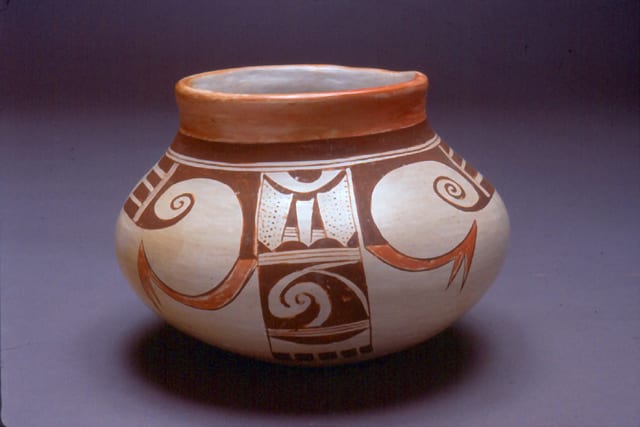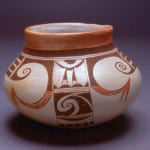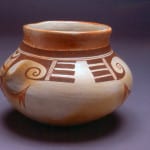Hopi jar, a variation of the traditional “eagle-feather” Sikyatki/Nampeyo design by Nellie Nampeyo Douma (born 1896; died 1978), one of “Old Lady” Nampeyo’s three daughters. Nellie can do more delicate and balance work (see 1993-02), though Rick Dillingham comments that “I don’t know much by Nellie that was very good. Most are heavy and casually painted.” For a pot presumably formed by her mother and painted (and signed) by Nellie, see 2003-07. For a Nellie pot in Rick’s collection, see Dillingham (1994:59).
Pot 1991-03 is thick asymmetrical, fired at a low temperature (and therefore gray), with awkward painting and a carbon fire cloud. Made about 1960. Yet, the jar has a basic sense of power and presence that is missing from more perfect pots made by many current potters. For a picture of Nellie (and two of her pots), see Barsook (1974: 30). Perhaps the light color of the fired clay was intentional. The Seven Families book quotes Nellie as saying “The whitish color to my pottery is from the way I fire it (Barsook, 1974:30).”




